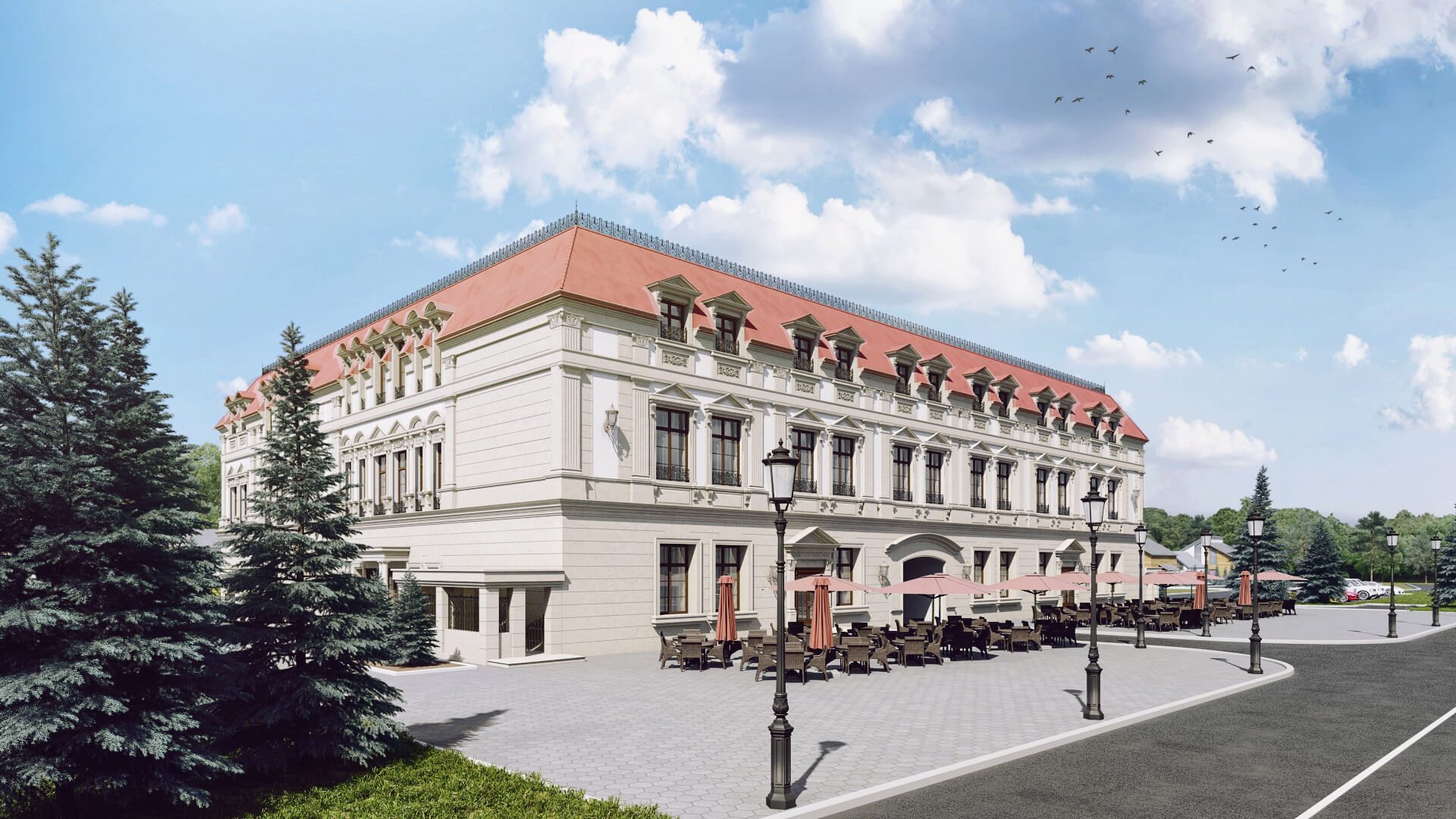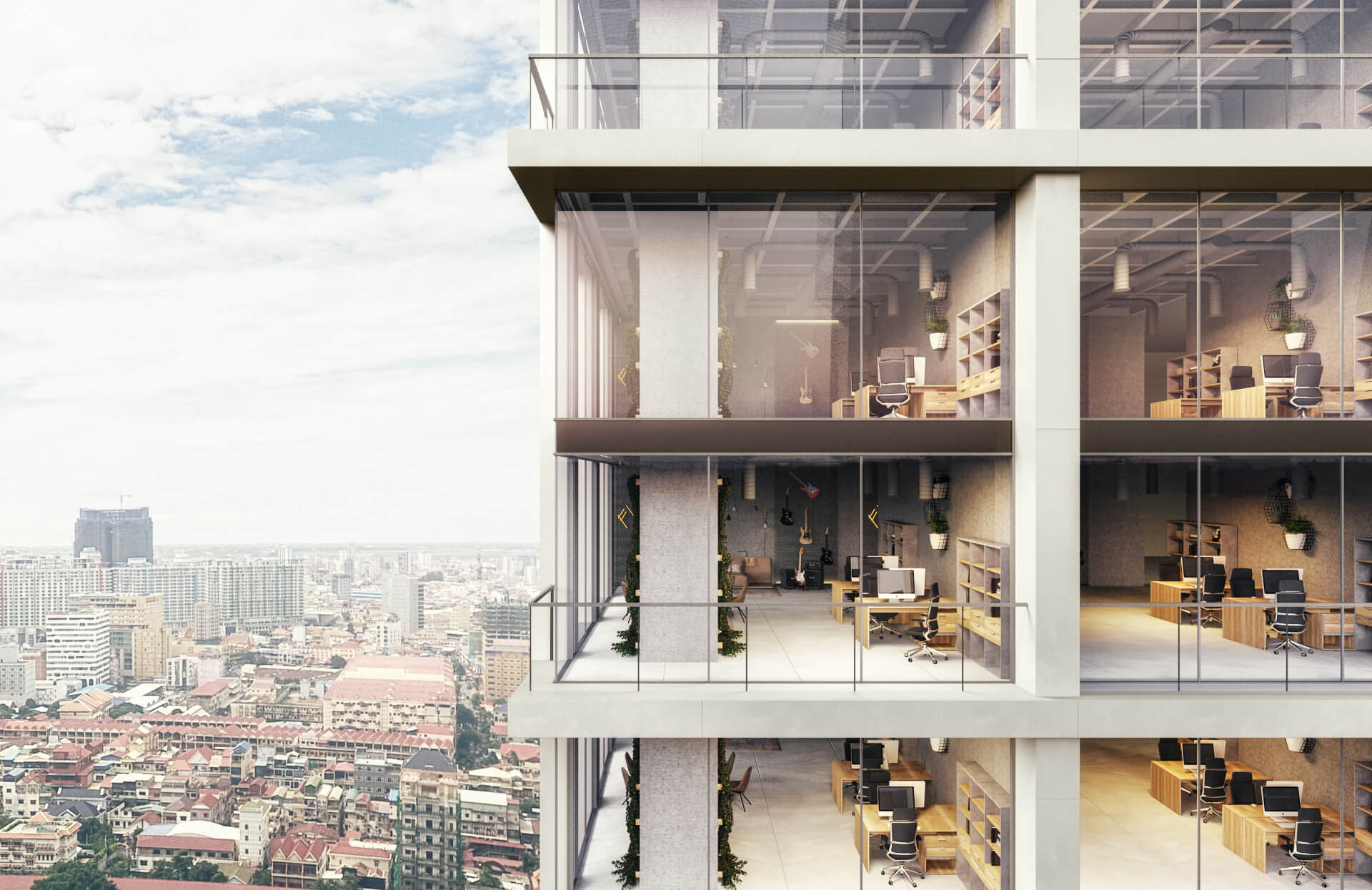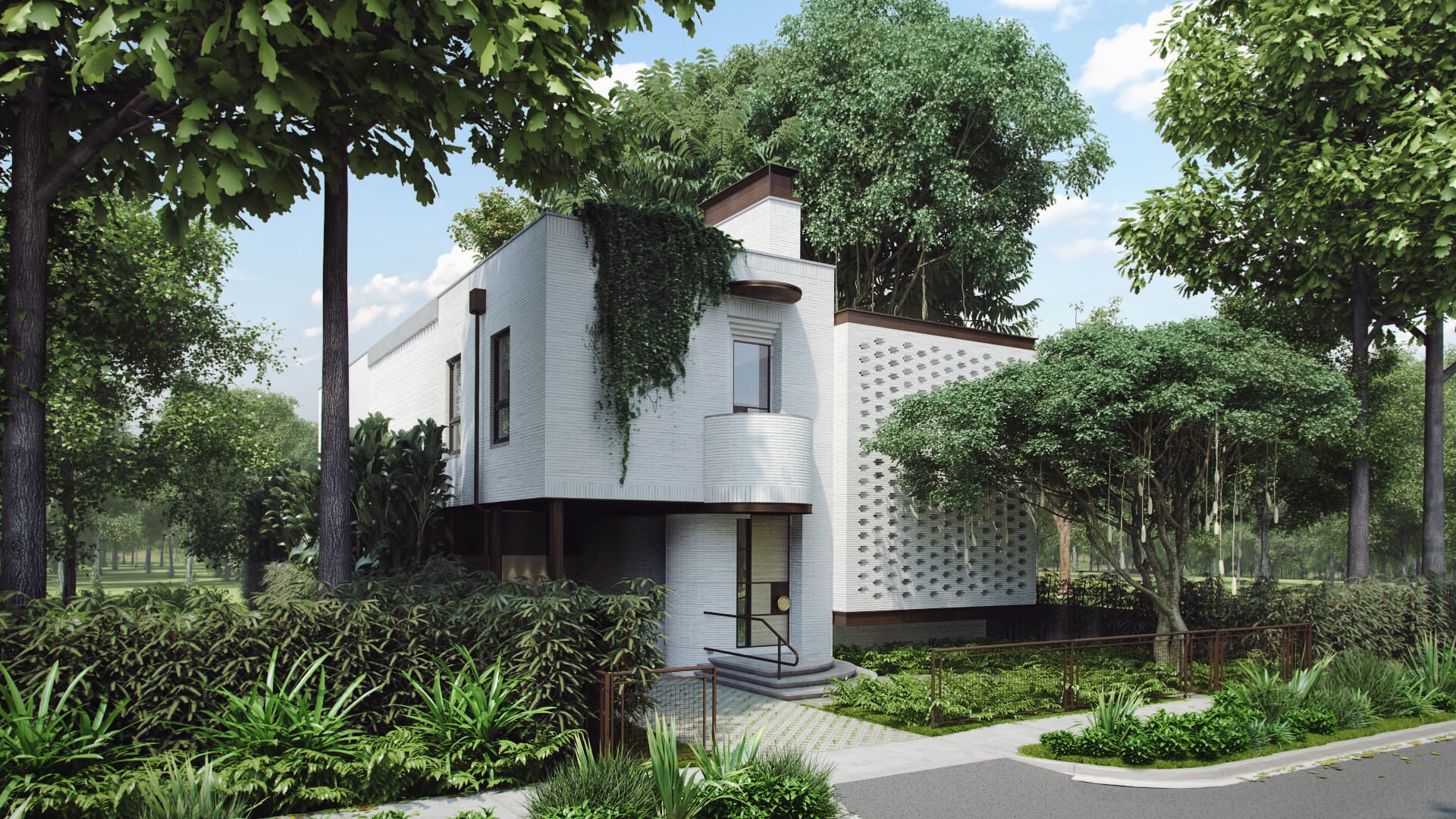Architectural 3D modeller can save an Architect from spending most of his precious time on constructing physical models. Trying to convey all the beauty and practicality of the concept this way is hard work requiring energy and a great deal of creativity. And all that is for a prototype that will be used only once. For instance, one can spend a lot of time making a complicated model of a future building, only to find out that it won’t make it to the show — for the masterpiece broke right before the presentation. Which means the last night before the meeting will be spent on damage reparations.
Not to mention that most often, during the presentation the client asks for changes to be made in the architectural design project. So, the Architect has to start everything all over again: glue small details together at night on his own or delegate this task to the team. And this means spending more time and money on work and materials.
Meanwhile, there is a way to get a perfect illustration material without laboring over it for weeks — 3D modeling and visualization services. Professional 3D modellers can provide photorealistic presentation assets, and what is more, help to ease the whole process of preparations. How so? Let’s find out.
#1. Architectural 3D Modeller’s Art Save Architect’s Time

Making a detailed physical prototype of a future building is very time-consuming. Especially when the models involve lots of details and require recreating surroundings. In this case, the preparation of a prototype will take weeks.
But with the help of architectural 3D modellers, making presentation materials becomes much faster. The truth is that a 3D Artist can provide accurate photorealistic 3D renders of the future building in just 4-5 working days. Since CGI is created so quickly, the Architect will save much time for preparing the presentation speech or spending some quality time with the family.
#2. CGI Don’t Need Transportation

Architectural models made of plastic or wooden details are fragile and thus can easily break during transportation. To avoid this, the Architect can replace physical prototypes with CGI created by a 3D modeller. CG visuals are digital, and therefore do not need to be transported anywhere. Actually, all one has to do is to show 3D renders on a computer screen or to send a link online if the client is far away.
Make sure your exterior design project takes your clients’ breath away
#3. An Architectural 3D Modeller Helps to Save Money

Making physical prototypes requires many materials and long hours of meticulous manual work, which are pretty expensive. In fact, an Architect can spend several thousands of USD to get a detailed prototype of the building.
The process can be way less expensive if one works with a skilled Architectural 3D Modeller. For 3D modeling requires neither materials nor efforts of the Architect or his team. All the work is done digitally, with the help of CAD software, based on drawings, and material references. This way, digital prototyping saves money — while delivering great results.
#4. 3D Prototypes Always Look Good

Time is an enemy for physical prototypes. The influence of the environment kills them: temperature, humidity, dust, all the usual wear and tear turn the masterpieces into a shabby sight. The only way to prevent the inevitable decay is to find suitable storage and provide full maintenance. The latter includes regularly dusting the models and repairing whenever necessary. Which calls for more space, work, possibly people — and for what?
In contrast, 3D prototype is not affected by environmental effects, aging, and other influences of the physical world. Photoreal 3D rendering is a virtual product that never gets old and does not need any cleaning.
What is more, photoreal CGI has a lot of visual impact. The Architect who works with the best 3D architectural visualization companies can get real show-stoppers for marketing materials, and a whole variety of them. It’s possible to create 3D models of buildings on white, in context, as well as 3D animations or even virtual tours — any of which will definitely get the viewer’s attention.
#5. Architectural 3D Modeller Can Correct CGI Easily

When physical models are ready, it is very hard to introduce any corrections to them. So, if the client decides that he wants to change colors or materials, the Architect will have to build a new model. Which means spending more time, money — and possibly throwing the whole crew on the task to be on time.
But with 3D visuals, the Architect does not have to do that. If the project needs corrections, a 3D modeller can simply adjust CGI in a computer program, and, presto, the presentation is updated.
The art of a skilled 3D Architectural Modeller can easily replace physical prototyping — and for good reason. CGI allows to save both time and money, and to get detailed photorealistic presentation materials that fear neither environment damage nor aging, and don’t take any storage space. What is more, 3D renders are easy to correct and can be quickly sent to a client in any part of the world.
Get your project estimated in just 1 hour - fill out this brief!
Want to showcase your projects with the help of photoreal CG images made by a professional team of 3D modellers? Contact our architectural rendering company for the accurate virtual prototypes of any complexity.

Catherine Paul
Content Writer, Editor at ArchiCGI
Catherine is a content writer and editor. In her articles, she explains how CGI is transforming the world of architecture and design. Outside of office, she enjoys yoga, travelling, and watching horrors.


